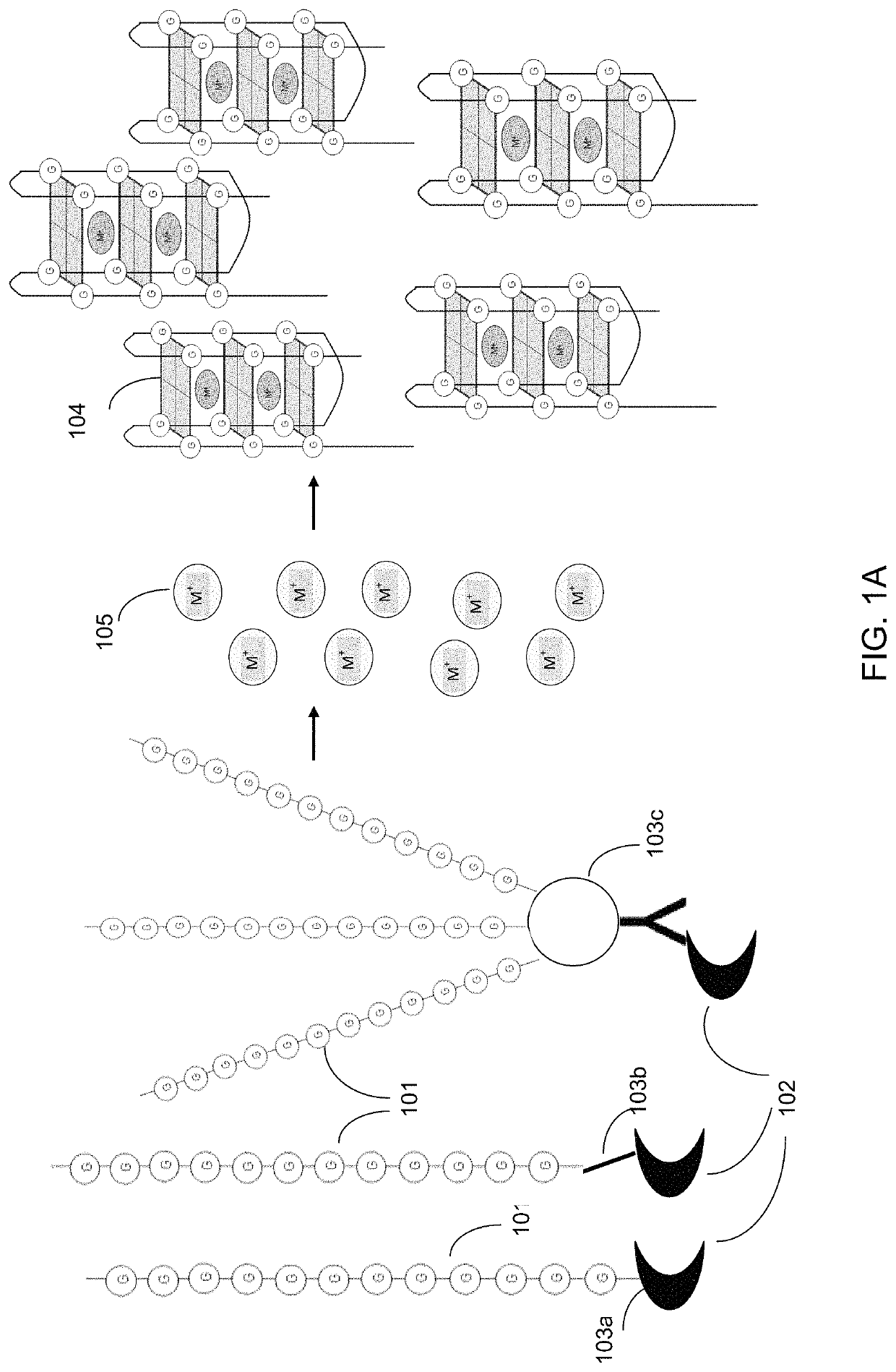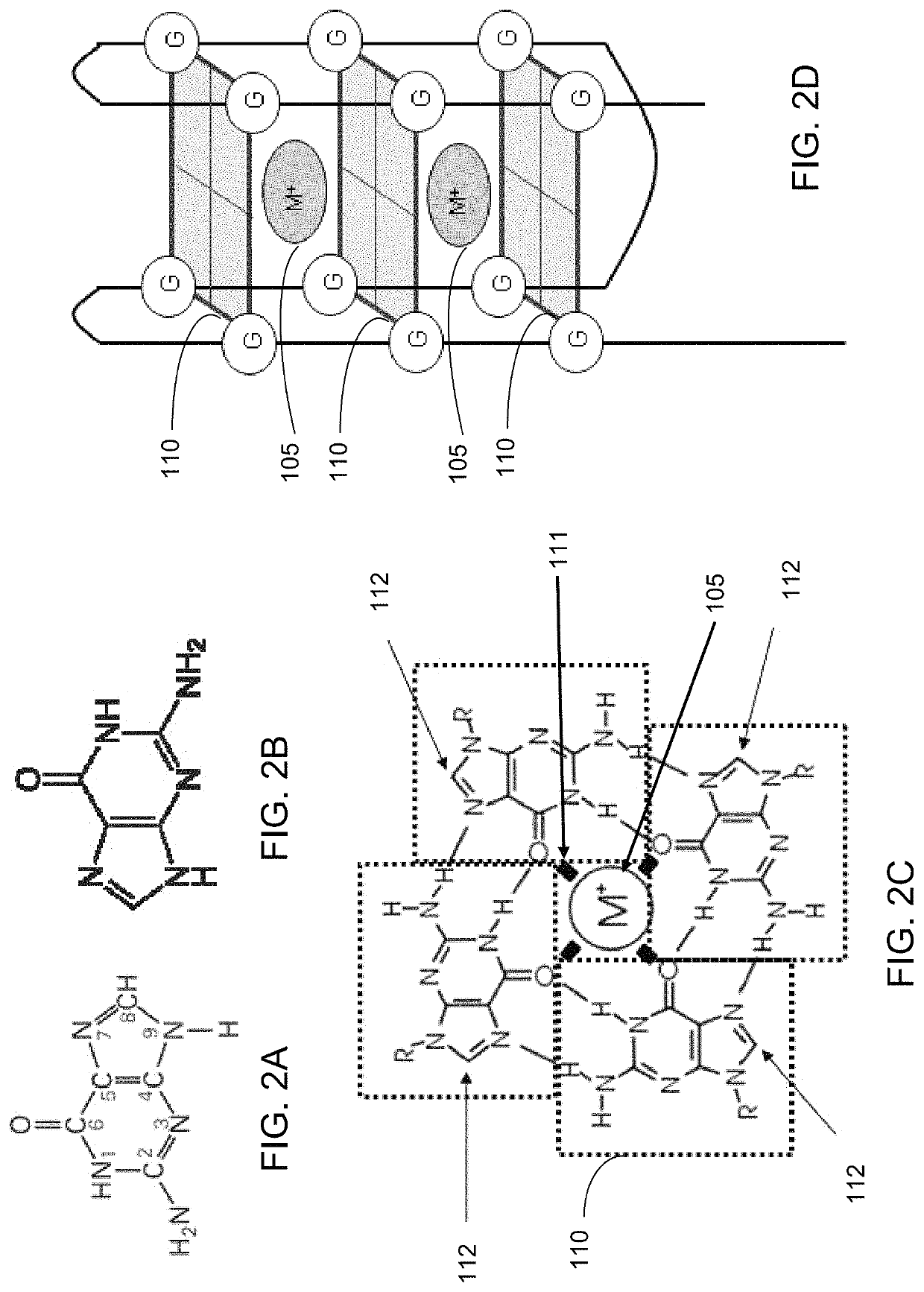Ultra-sensitive bioanalyte quantification from self-assembled quadruplex tags
a self-assembled, ultra-sensitive technology, applied in the field of biological assays, can solve the problems of false negative results, difficult and costly assay accuracy, and inability to accurately assay biological analytes,
- Summary
- Abstract
- Description
- Claims
- Application Information
AI Technical Summary
Benefits of technology
Problems solved by technology
Method used
Image
Examples
example 1
Sandwich ELISA with Electrochemically Detectable Oligonucleotide Tags
[0152]As an example of an embodiment of this invention, test samples were evaluated for low levels of Cryptosporidium parvum oocysts in drinking water. In 1993 Milwaukee experienced the largest documented drinking water outbreak in US history caused by the chlorine-resistant parasite Cryptosporidium parvum, which sickened over 400,000 people and killed 100, mostly HIV / AIDS patients. Low level detection is important because cryptosporidium has an infective dose as low as 10 oocysts / mL which is below the detection limit of most assays. In this example, reagents were procured in advance of the experiments including ELISA microtiter wells coated with anti-cryptosporidium antibodies to capture the analytes and a BSA blocking agent to block potential binding sites from non-specific materials. 1-micron polystyrene microparticles (PB) were conjugated with single-stranded electrochemically detectable oligonucleotide tags (2...
example 2
Microbead Sandwich Assay with Electrochemically Detectable Oligonucleotide Tags
[0155]As a further example of an embodiment of this invention, test samples in Example 1 were found to have a high level of nonspecific materials that interfered with detection. The protocol in Table 9 was modified to add an additional step for magnetic separation to remove the nonspecific materials. In this example, reagents were procured in advance of the experiments including magnetic microparticles (MB) coated with anti-cryptosporidium antibodies to capture the analytes and a BSA blocking agent to block potential binding sites from non-specific materials. 1-micron polystyrene microparticles (PB) were conjugated with single-stranded electrochemically detectable oligonucleotide tags (20-mer PolyG), and also with anti-cryptosporidium antibodies using biotin-streptavidin chemistry. Other reagents and equipment included PBS wash buffer, 80 mM NaOAc (pH 9) with 95% formamide elution buffer, microtiter rotat...
example 3
Multiplexing Microbead Sandwich Assay for Detecting Multiple Analytes in a Group
[0158]In another example, an assay described in Example 2 is used to detect Cryptosporidium and E. coli O157:H7. There is provided a set of magnetic microparticles conjugated with antibodies that bind Cryptosporidium, and another set of magnetic microparticles conjugated with antibodies that bind E. coli O157:H7. There is also a set of polystyrene microparticles conjugated with antibodies that bind Cryptosporidium and millions of a unique guanine-rich oligonucleotide tag, and another set of polystyrene microparticles conjugated with antibodies that bind E. coli O157:H7 and millions of the same unique guanine-rich oligonucleotide tag. The protocol in Table 10 is used and all of the eluted tags are delivered to a common biosensor working electrode. The signal generated in Step 11 will exceed the negative control if a detectable concentration is present for Cryptosporidium, or E. coli O157:H7 or both pathog...
PUM
| Property | Measurement | Unit |
|---|---|---|
| pH | aaaaa | aaaaa |
| concentration | aaaaa | aaaaa |
| pH | aaaaa | aaaaa |
Abstract
Description
Claims
Application Information
 Login to View More
Login to View More - R&D
- Intellectual Property
- Life Sciences
- Materials
- Tech Scout
- Unparalleled Data Quality
- Higher Quality Content
- 60% Fewer Hallucinations
Browse by: Latest US Patents, China's latest patents, Technical Efficacy Thesaurus, Application Domain, Technology Topic, Popular Technical Reports.
© 2025 PatSnap. All rights reserved.Legal|Privacy policy|Modern Slavery Act Transparency Statement|Sitemap|About US| Contact US: help@patsnap.com



